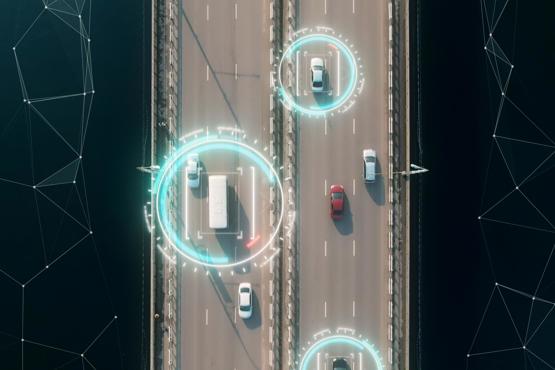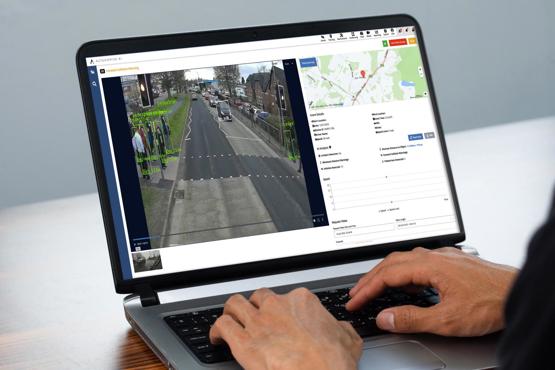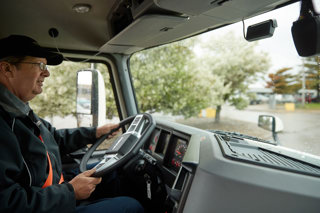
In recent years, the term connected vehicles has perhaps become most associated with technologies such as vehicle-to-everything (V2X) communication and autonomous vehicles.
But, while these developments are still many years from becoming a reality in the UK, many fleets are already using connectivity to improve operations, most commonly through vehicle tracking and telematics.
Telematics, particularly, can have wide-reaching benefits for a fleet.
“Simply put, implementing an effective telematics solution can deliver tangible benefits in a number of key areas, not least safety, productivity and efficiency,” says Paul Wilson, sales and marketing director at Trakm8.
“Telematics software can be used to collect data from individual drivers, giving fleet operators data-rich insights into a host of driving habits, including harsh acceleration, over-revving, harsh braking, over-cornering and engine idling.
“By identifying such habits, fleet managers are better able to offer training opportunities to drivers, specifically tailored to the areas they may need more guidance and support.
“Such training can significantly improve a driver’s individual performance and drive tangible results for the fleet as a whole.”
Connected systems provide real-time feedback to fleet decision-makers about driver location, performance and any incidents.
Connected cameras
Some fleets take this further by using video telematics, where dashcams are combined with a telematics system to provide instant notification and footage of any incidents.
Speedy Asset Services, for example, used to have separate telematics and camera systems, which meant its telematics provider Masternaut would email it if there had been an incident, and if the fleet team wanted to see the footage they had to take the memory card out of the VisionTrack camera and upload it into a computer.
Following an upgrade from VisionTrack which saw footage uploaded to the cloud and accessed through an online portal, Aaron Powell, head of fleet at Speedy, got his two suppliers to speak to each other.
“Now we simply get an email from Masternaut to say there’s been an incident and here’s the footage,” he says.
Other fleets have taken this even further: FM Conway (see case study) has cameras fitted with artificial intelligence (AI) to pre-emptively identify incidents or potentially dangerous driver behaviours, while Ringway Jacobs uses its connected vehicle technology to also protect lone workers.
The construction company last year fitted dual-facing dash cams to an initial 163 vans and specialist vehicles, and these were connected to its Peoplesafe Pro system.
This allows both audio and video to be viewed by Peoplesafe’s alarm controllers in the event of any alarm being raised on the Pro mobile app, which could be an injury, illness, collision or incident of aggression.
“Our aim is to always provide a safe working environment for our employees and we are committed to adopting industry best practice technology and processes,” says David Bonehill, head of fleet at Ringway Jacobs.
“This latest initiative will not only increase compliance of our own lone worker processes, but also extend and enhance the levels of protection we can provide our drivers.”
Drivers scan a QR code using the app to register their ID and this automatically enables controllers in the Peoplesafe Alarm Receiving Centre to access both audio communication and video footage, as well as incident data when an alarm is raised.
Bonehill says the combination of mobile app and video also means that access to emergency help is much faster and more efficient than calling 999.
Artificial intelligence
The use of AI, which is essentially creating machines which are able to solve problems and make predictions based on data supplied to them, also has a growing impact of technologies used by fleets.
This includes improving road safety, says Geoff Cross, managing director of Centrad, which is developing a range of AI camera products.
“Over the coming years there will certainly be a shift in the marketplace with regards to vehicle CCTV camera products on offer,” he adds.
“Although the vehicle CCTV cameras will still play a significant role in providing real-time incident detection and deterrence, the use of AI with such products will greatly enhance their ability to proactively prevent accidents from occurring.
“This is particularly prevalent with driver-facing AI cameras, which are able to detect high-risk behaviours and alert both the driver and the fleet manager in the event of fatigue or distractions.
“Through being enhanced with AI, such products can therefore be used to effectively flag up incidents before they occur by detecting behaviours and facial cues, rather than simply just reacting to accidents which is an issue with standard systems.
“With the next level of vehicle safety technology available we have the power to prevent accidents and risky driving which will not only have a positive impact on the bottom line for fleet operators, but, more importantly, will vastly improve the safety of their drivers and other road users.”

Hazard identification
VisionTrack’s NARA (notification, analysis and risk assessment) cloud-based software package uses deep learning algorithms to allow any connected vehicle camera solution to automatically identify different types of vehicles, cyclists and pedestrians.
The company says it can also distinguish between collisions, near misses and false positives that can be generated by harsh driving, potholes or speed humps.
“With traditional video telematics solutions, commercial fleets can be experiencing hundreds of triggered daily events,” says Richard Kent, president of global sales at VisionTrack.
“NARA proactively removes false positives and monitors driver behaviour without the need for human involvement.
“This will enable fleets to deliver more efficient working, while not compromising on road safety.”
During the testing phase, VisionTrack found a 1,100-strong logistics fleet was generating an average 2,000 priority videos a week, which, the company says, would typically take someone more than eight hours to review.
He says NARA reduced the time taken to review events that require human validation was reduced to just minutes per day.
AI is also being used in other fleet applications, such as route optimisation software.
In this, the AI systems can analyse large volumes of data and identify patterns such as traffic and can then use this information to create optimised routes that factor in time, distance and cost-efficiency considerations.
Over-the-air software updates
A further way connectivity is helping reduce downtime is through over-the-air software (OTA) updates.
New vehicles are increasingly being launched with the ability to receive tem, which can reduce or eliminate the need for physical visits to dealerships or service centres.
The rise of electric vehicles and the increasing complexity of modern vehicles means the need for software updates has become increasingly crucial as it allows for the correction of issues, the addition of new features, and the improvement of existing ones, says Pedro Pacheco, senior analyst at automotive analysts Gartner.
Regular software updates can prevent hacking and other security threats, ensuring the safety of passengers and the protection of personal data.
The downloads are received via a wireless network connection and can happen when the vehicle is being used, but they usually need to be stationary for the software to install.
A recent example of how OTA can reduce downtime is the global recall earlier this year by Volvo for its entire line-up of 2023 model year cars, amounting to 106,681 cars worldwide, including 10,197 vehicles in the UK.
Volvo says the issue lays in software within a braking control module and could mean that in “rare cases” a car’s autonomous emergency braking (AEB) might fail to activate when needed.
To remedy the affected vehicles, Volvo will update the software relating to the brake control module.
This will be done OTA for vehicles with that function, while all others will need to be taken to a dealer.
Case study: FM Conway
 Infrastructure services company FM Conway has implemented a new artificial intelligence (AI) telematics system on its 1,000-strong fleet.
Infrastructure services company FM Conway has implemented a new artificial intelligence (AI) telematics system on its 1,000-strong fleet.
The installation is part of the company’s 10-year health and safety strategy, The Big Ten in 10, which prioritises the 10 biggest risks to life and uses digital and technological advances to implement safety-critical controls.
The telematics system analyses how the fleet is being driven via live data from the company vehicles, as well as providing in-cab prompts that help adjust unwanted driver behaviours.
By using AI cameras in the vehicle’s cab, the system pre-emptively identifies incidents or potentially dangerous driver behaviours and sounds an alert before recording a short clip of footage to be reviewed.
“The in-cab cameras can, for example, detect if the driver has picked up his phone or is looking at a map or has undone his seatbelt,” says Dave Conway, IMS and road safety manager at FM Conway.
“We are notified immediately so we can send a message to his boss, and his boss can call him on a hands-free transmission and say ‘put your seatbelt on’, or whatever.”






















Login to comment
Comments
No comments have been made yet.